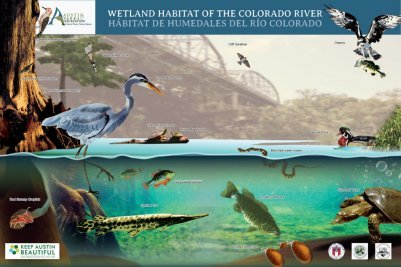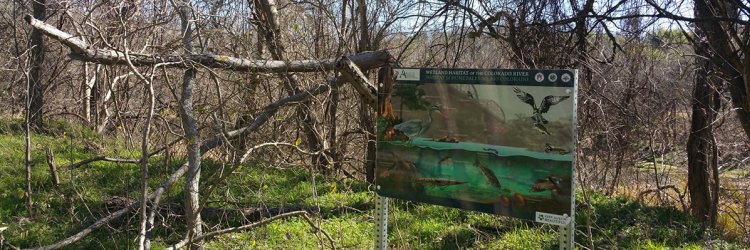In urban areas like Austin where green space is becoming more and more limited sits the Colorado River Wildlife Sanctuary, a 47 acre preserve of undeveloped land. It is not just any land, it is a unique wetland ecosystem along the Colorado River basin within the heart of Austin. Due to its location downstream of Lady Bird Lake, the preserve serves as the kidneys of Austin where all trash running off of local creeks and Lady Bird Lake accumulate. When I first came upon the area in 2011, it had become a dumping grounds and was overgrown with invasive species and poison ivy.
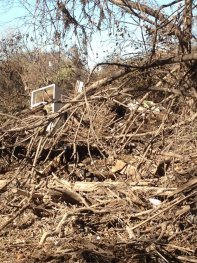
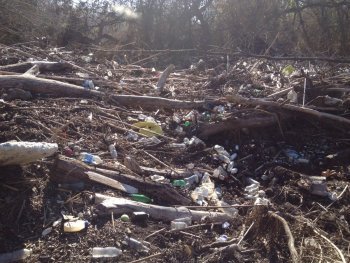
The area was in need of care. So Keep Austin Beautiful partnered with the City of Austin Parks and Recreation Department on a mission to restore local species in the area, make the space more accessible, and create educational opportunities within the preserve. Ambitious restoration goals require financing, resources, and volunteers. 3M saw the value in the project and granted national funds to initiate the work. Alignment with Wells Fargo’s National Fish and Wildlife’s Environmental Solutions Grants designed to support projects that link economic development and community well-being to the stewardship and health of the environment produced more generous funding. The initiative was set in motion in a targeted seven acres of the wetland along the Colorado River line. Over the course of 32 months 91 projects would be hosted in the area to remove invasive bamboo and chinaberry, plant 77 bald cypress trees and two dozen wild grass seedlings, distribute 300 pounds of seed, and remove 800 bags of trash in and upstream from the area.
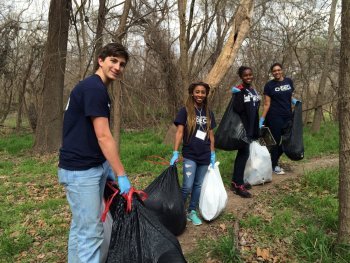
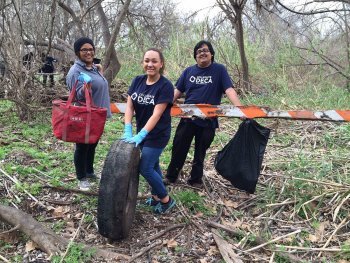
Visiting the preserve, you find a true sanctuary ten minutes from downtown and in the burgeoning east side of Austin. The visual difference is striking and the results in numbers alone are compelling. But three years ago it was hard to know where to start.
Flooding had resulted in trash found in trees 20 feet high! Before bulky items and trash could be removed loose and dangerous tree limbs were trimmed from the walkway. Patience was required as we waited until the summer months when poison ivy was dormant to begin the trimming. Volunteers covered in poison ivy block, should any not be dormant, and using nothing but hand pruners and loppers cleared the way. The clearing would continue with bulky items and 600 bags of trash totaling 10,700 pounds being removed. Taking a holistic approach to managing the area, an additional 20 community cleanups were coordinated upstream and downstream.
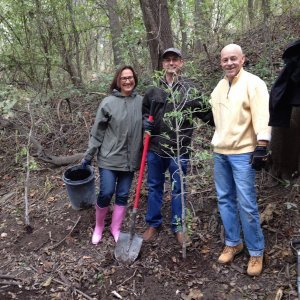
Working in succession, we focused on more removal, but this time of invasive species not trash. The riparian and upland areas of the preserve had become overgrown with invasive chinaberry, bamboo, and Chinese tallow trees that made up 56% of the canopy. These tree species disrupt the natural ecosystem by out competing native species. Successful removal required disrupting the root system. Nifty weed wrenches that use a leveraging system to crank out saplings and volunteer strength did the trick. If you’ve never used a weed wrench, I highly recommend joining us for an upcoming creek restoration day. Pulling out an invasive sapling roots and all is an amazingly gratifying experience. Here is a handy video on how to use a weed wrench.
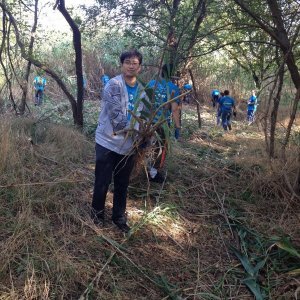
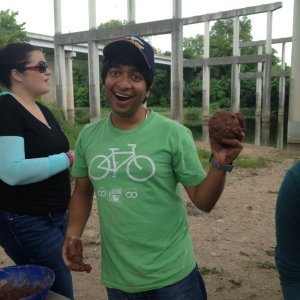
As invasives were cleared, space became available for native species. Wildland grasses seeded at and donated from the Lady Bird Johnson Wildflower Center found a home in the sanctuary. Thanks to two rainy seasons in a two-year span, sprouts are visible and becoming well established ensuring stabilization of the bank. The Bald Cypress are still small, but over time will provide a tree-lined waterway. The tree lining acts as a wildlife buffer for red tail hawks and provides nesting for waterfowl that inhabit the area.
As a mother, I sometimes can’t believe my seven-year old son was once a toddler. Similarly, the transformation at the preserve seems implausible. It is hard to recall the before image of the sanctuary. Thanks to before photos taken onsite, we don’t have to really on our memory. Volunteer interest in the area is also growing faster than the invasives. The sanctuary is appropriately named, because volunteers seem to love working in the area. Following a volunteer workday, business and community groups request returning to the sanctuary to continue their service. Here are just a few of the many groups who weren’t afraid to tackle trash, invasive species, and much more: 3M, Better Business Bureau, Dell, Explore Austin, Friends of Colorado River, Green Teens at Martin Middle School, Texas Collegiate DECA, Texas Lassos Service, Wells Fargo, and Whole Foods Market.
I invite you to set aside some time and take a stroll through the preserve. Along the way, you will also find new educational signs providing insights about the wetland ecosystem, wildlife inhabiting the area, and the importance of protecting the preserve. While enjoying the respite, we can take a minute to appreciate the care that made it all possible. I hope to see you out there soon – Colorado River Wildlife Sanctuary, 5827 Levander Loop, Austin, TX 78702.
